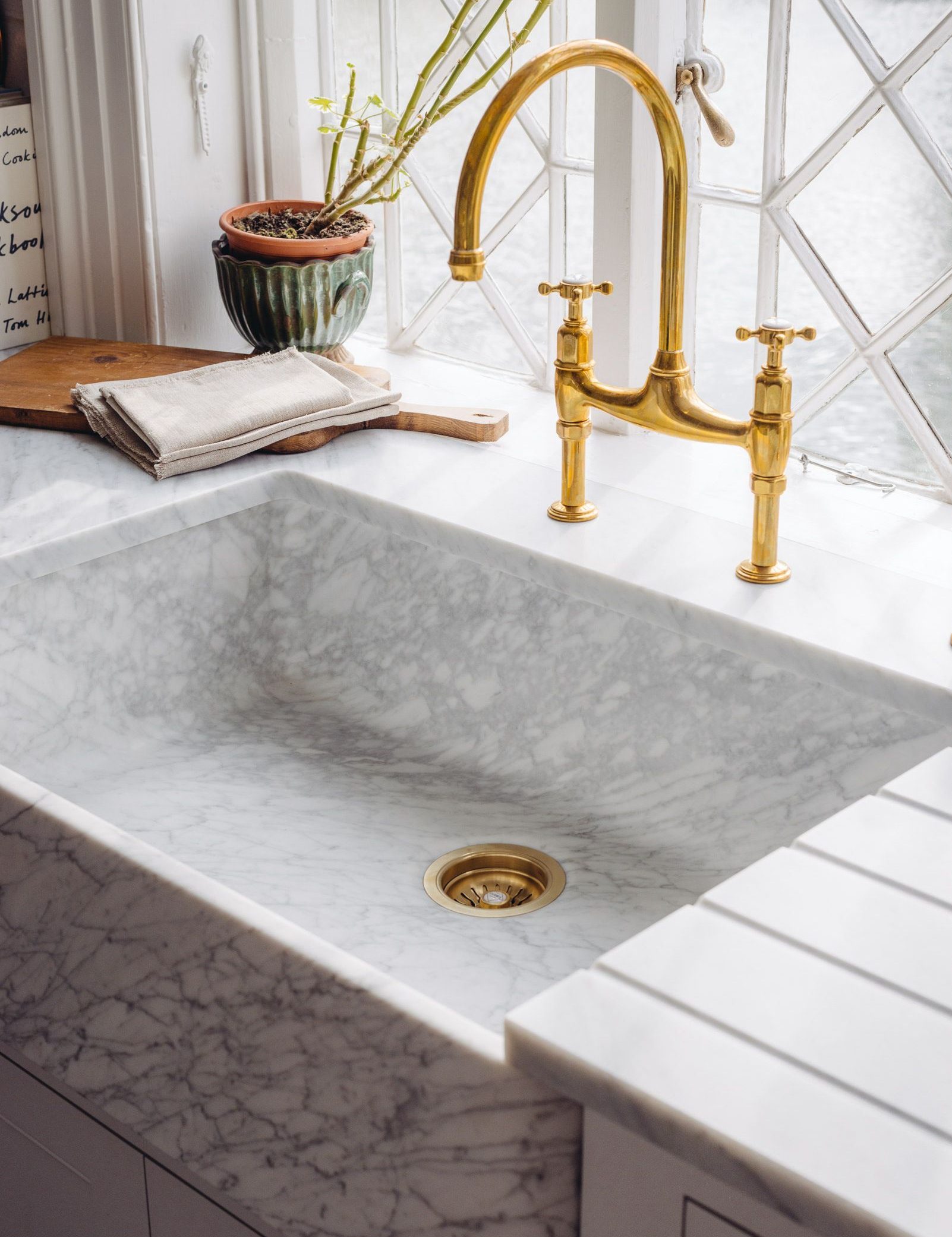[main image source devolkitchens.co.uk]
There are a lot of factors to consider when purchasing a new sink, but today we are going to focus on sink material. Sink material affects things such as the price, durability, maintenance, and style of your sink. Which material is right for you?
Pure Stone
Pure stone sinks made of granite, marble, or quartz are some of the most expensive sinks you can buy, costing often $1,000 – $2,500, and even sometimes as much as $5,000. Each pure stone sink will be unique from any other sink in it’s appearance, because each granite piece, mined from the earth, is itself unique. This attracts a lot of people to a pure stone sink. But one downside is that because stone is a naturally porous material, you’ll have to seal the sink each year with sealer to protect it from damage. These stones can be very heavy as well, which may mean that your counter will need some reinforcement if you want to install one of these. Pure stone also has a higher chance of chipping your dishes, and the sink itself is prone to chipping if you are not careful. If you choose pure granite, be sure not to use harsh cleaners since this might damage it. Of these pure stones, marble is the most likely to stain and quartz is a little more resistant to chipping.
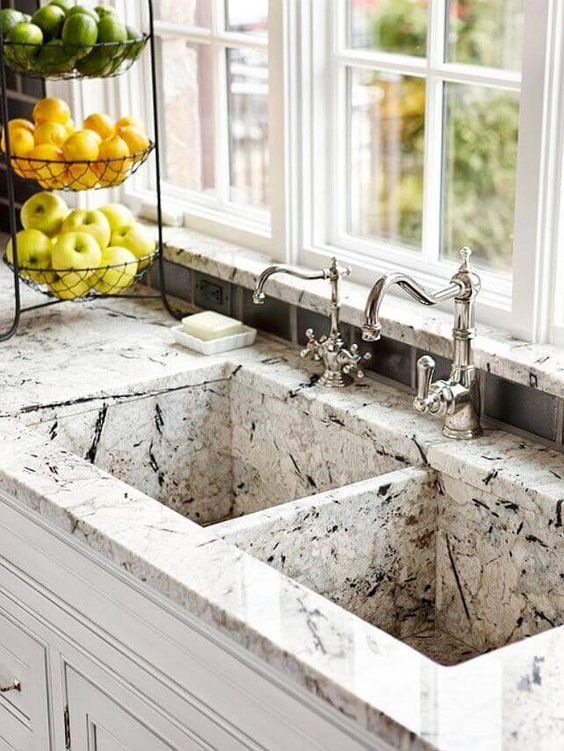
Granite or Quartz Composite
A granite composite sink or a quartz composite sink is a more popular option by far than a pure stone sink. A composite sink is made of crushed granite or quartz mixed with an acrylic resin which is then heated up to as high a heat as 1,600 degrees Fahrenheit. This results in a material that is non-porous, and so doesn’t have to be re-sealed every year. While the appearance of your sink won’t be natural like a pure stone sink is, a composite sink provides a consistency in design, and there a lot more options to choose from when it comes to colors and patterns. A very popular option is black. These sinks maintain their color overtime very well. Composite sinks are more durable than natural granite or quartz, and are very dense. Because of their density, they absorb sound. If the clanking of your dishes against your sink bothers you, this might be a good option for you. Just watch out for extreme heat, since this might damage a composite sink. This option is also a lot less expensive than a pure stone option. The price for these sinks ranges from around $200-$800.
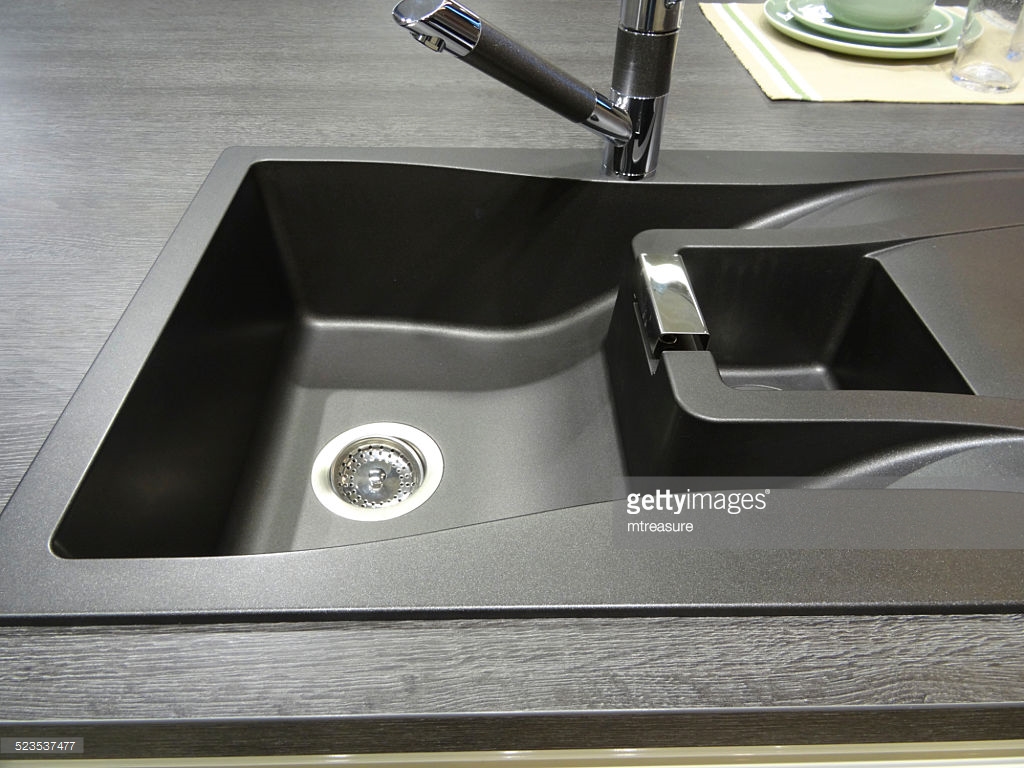
Stainless Steel
Stainless steel is the most popular and common material for a sink. In fact, around 70% of all sinks are made from stainless steel. This is because these sinks are not only an inexpensive option, but stainless steel sinks also come in many different styles that include a very modern look. Stainless steel is heat and stain resistant, although it may be hard to keep water spots from forming on it. While stainless steel is generally durable, it can possibly get scratched. It also is a noisier material than most sinks when doing dishes, but you can place sound absorbing pads on the bottom and sides of the sink under the counter if you need. Sound absorbing pads can be more effective than the coating that is sometimes put on stainless steel sinks to help with noise. Because Stainless Steel is so versatile, the price can vary dramatically. They are most commonly $100-$500. If you are looking for a specialty sink, the price may reach as much as $2,000.
Porcelain or Enamel over Cast-Iron
Cast iron sinks have been made for hundreds of years. These days, the cast iron is covered with a porcelain layer, to protect the iron sink from rust, but to also give the sink a shiny, pretty look. Most cast-iron sinks are covered in a white layer of porcelain, but they come in many colors. These sinks are very, very heavy, some reaching up to 100 pounds! This will likely mean that your counter will need reinforcement to install this sink. These will not show water spots like stainless steel might, but be careful not to use cleaners that are too abrasive. They are durable enough for light to medium kitchen use since it is possible for the porcelain to chip, exposing the iron underneath. You’ll have to be careful if you use heavy cookware. But if the sink is well maintained, it can add to your home value. Cast iron sinks cost $300-$600, which can be more expensive than the stainless steel option.
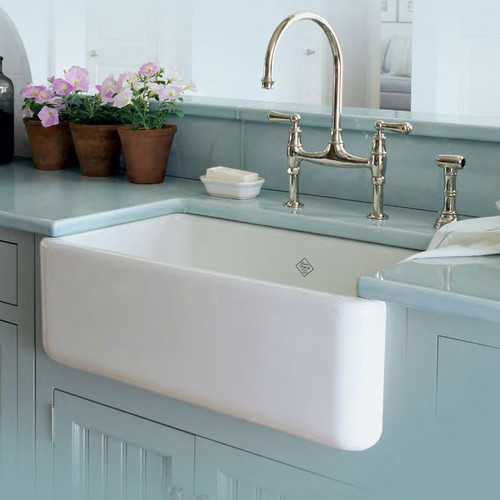
image source blog.yaleappliance.com
Solid Surface
Solid surface sinks are made with a synthetic material of acrylic or polyester resin combined with a mineral compound. Countertops can also be solid surface, which means that you can have your countertop and sink molded from the same sheet of solid surface if you want a really uniform look. These sinks also come in a wide variety of styles and colors, and are easily maintained. Any scratches can usually be easily removed with a little sanding. But the material is not heat resistant and you will damage the sink if you set hot pots or pans directly inside. Solid Surface sinks cost about $300-$700.
Fireclay
Have you ever done pottery? Well, a fireclay sink is a lot like that. It’s clay, molded into the shape of a sink, and then covered with porcelain, much like the cast-iron sink. It is then heated with temperatures of over 2,000 degrees Fahrenheit. This solidifies the sink, making it durable. Like a cast iron sink, it’s also a very heavy sink that may need some reinforcement. Fireclay is usually used for farmhouse style sinks. While there is still a possibility of chipping with this material, fireclay is slightly more durable than cast iron, and you can safely use more abrasive cleaners on it. The downside is that fireclay is more expensive than cast iron. They can be extremely pricey, landing anywhere between $400 – $1400.
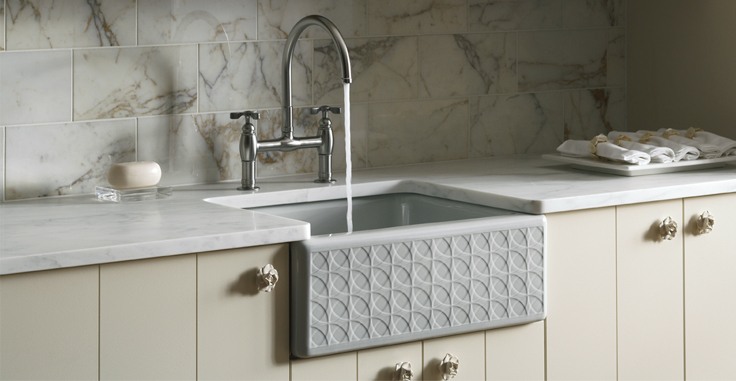
image source architecturelab.net
Copper
Copper sinks are very much in style. They are usually hand-crafted, and can be a very attractive addition to your kitchen, especially if you already have some copper accents. Keep in mind though, that because they are hand-crafted, it is possible to get a sink that isn’t quite the right measurements you ordered. Another aspect of copper that is usually considered a downside is that it naturally changes color over time, like a shiny penny becoming more and more brown. This natural process that copper goes through is called patina. There are ways to help slow patina from happening, but most people just have to accept it as part of the design of the sink. You can actually choose between a range of patinas, as well as whether you want a smooth finish, or a more hammered look. Copper can get scratched, but these sinks can generally outlast many other sinks and are very resistant to staining. Copper also is naturally antimicrobial, meaning that it kills 99.9% of germs all on it’s own. Copper sinks are the most pricey, ranging from $600 – $12,000.
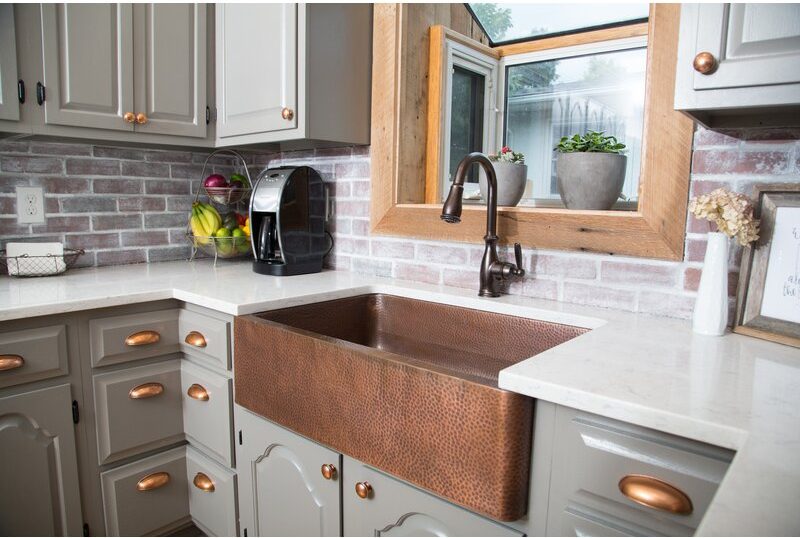
image source wayfair.com
